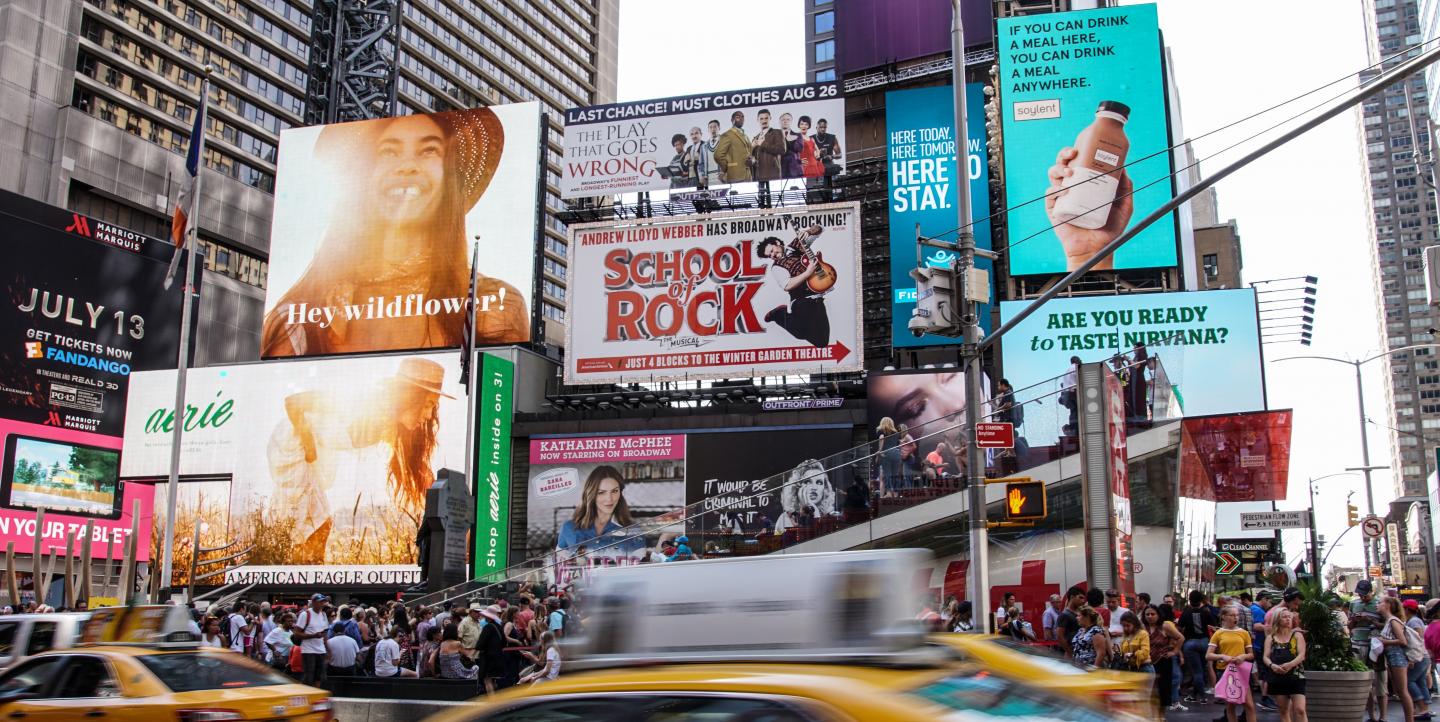This piece, written by Gretel Müller is part of a series of articles by Chicas Poderosas (Powerful Girls), a global community that promotes female leadership and generates knowledge. Read other articles by Chicas Poderosas here, and join the community on Twitter, Instagram and Facebook.
What does journalism have to do with advertising?
The question formed the basis for the “Journalism and Advertising Workshop” we ran with Flor Loda, creative director at Gray Buenos Aires, during the #EnResistencia Mediathon organized by Chicas Poderosas in Buenos Aires, Argentina. Journalism and advertising — two different ways of communicating ideas — can provide tools to enhance and strengthen the impact of the messages they communicate.
As a creative copywriter and freelance journalist, being able to draw tools from both worlds has always served me in my work.
To start, it’s best to debunk the idea that advertising is just a tool to sell products. Advertising is also media. Like any discourse based on persuasion, it can raise awareness, encourage critical thinking and generate conversation around what it communicates.
In this article, I will explore how tools from the advertising industry can be used to generate more interest in journalistic investigations, increase audience engagement and create clear and impactful messages for social media.
What does journalism have to do with advertising?
As I explained earlier, a lot!
Journalists have a tendency to focus on the what, “What is my message?” In an advertising approach, we are more focused on the how, “How am I going to tell it?”
With the impact of social media and other digital channels, advertising has increasingly become real-time content. Social media has impacted journalism in a similar way. In both examples, we start from the key premise that no one wants to watch an ad, or read an article, unless the message generates enough interest. Today, social media content is competing for people’s attention in the same channels as advertisements and news.
How can we generate interest in a journalistic piece?
(1) Who?
Learn who your target audience is.
In advertising, we start by doing research on our target audience. It’s not the same to speak to a millennial as to a baby boomer. To understand our audience, we have to go deeper and ask questions about how they get information, and what messages they respond to.
To understand how advertising insights can impact journalism, let’s look at an example from one of the projects created in the #EnResistencia Mediathon. A group of Argentine journalists wanted to gather testimonies about how the lack of a national law to regulate clothes’ sizes affected people’s everyday lives.
In this example, their target audience was broad: women who regularly went shopping for new clothes. Understanding this audience would help them better develop a campaign to reach the right people.
(2) What?
Spoil the end to get attention from scratch.
Sometimes, less is more. In advertising, it’s widely known that information that isn’t a part of the main idea can be left out. This doesn’t mean that the information isn’t useful, but that too much information can overwhelm your audience — especially in the age of social media.
In journalism, as in advertising, identify the main idea that you want readers to take home. Even if it means spoiling the end of the story, your audience needs to know what’s important.
When sourcing testimonies on the lack of sizing regulation, the team of Argentine journalists wanted their audience to know the problem — that women’s body image is affected — before asking women to share their own story.
(3) How?
Determine the methods that will make an impact.
Finally, you need to consider how you want to reach your audience with your message. These decisions might be simple, like deciding on a headline, or more complex, like deciding on images, design elements or interactive features.
The journalists behind the Argentinian campaign decided to share their question on Twitter. They developed the hashtag #MiCuerpoNoEsElProblema, and a short video with the colors pink and black. Realized that their target audience isn’t all on Twitter, the team also published the story in the Entre Mujeres (Between Women) section of Clarín, one of the main newspapers in Argentina.
¿Qué dejaste de hacer porque vestirte era un problema? Contanos tu historia usando 👉 #MiCuerpoNoEsElProblema pic.twitter.com/98QoAUR15M
— Chicas Poderosas Argentina 💚 (@ChicaPoderosaAR) July 18, 2019
Not only were they able to draw insights, experiences and quotes from the target audience, but the campaign also generated conversation and raised awareness about the issue. In a few hours, the hashtag #MiCuerpoNoEsElProblema was trending in Argentina.
That’s the power of the advertising approach!
Main image CC-licensed by Unsplash via Dennis Maliepaard.

